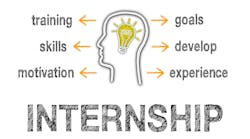As workplace trends play a large role in the success of any organization, Gartner has identified what it sees as important issues this year.
“Quiet hiring” will create new avenues to snag in-demand talent
Despite worries about a forthcoming recession and some layoff announcements, Gartner benchmarking data shows that a majority of HR leaders still expect the labor market to get more competitive.
Progressive HR leaders will turn to “quiet hiring” to acquire new skills and capabilities without acquiring new full-time employees. For example, they will deploy current employees to the highest priorities, which may necessitate reskilling and stretch assignments. Leaders will also emphasize upskilling to fulfill employees’ career aspirations while meeting organizational needs.
Hybrid flexibility will reach frontline workers
Many organizations have sought to make the workforce-wide experience fair by simply making it equal: mandating on-site work for those who could work elsewhere. More than six in 10 organizations have some sort of on-site requirement for employees whose work can be done remotely.
In 2023, smart organizations will stop limiting flexibility in the name of fairness and will pursue formal strategies for more flexibility for the frontline workforce. To do this, organizations will provide frontline workers more control over their schedules, more paid leave and more stability in work schedules.
Managers will be sandwiched by leader and employee expectations
“Many managers are struggling with how to balance the need to implement corporate strategy on behalf of senior leaders and providing the sense of purpose, flexibility, and career opportunities that their employees expect,” said Peter Aykens, chief of research in the Gartner HR practice.
In 2023, leading organizations will recognize the increasing pressure on managers, and they will provide support and training to mitigate the widening managerial skills gap while clarifying manager priorities and redesigning their roles where necessary.
Pursuit of nontraditional candidates will expand talent pipelines
Organizations are being forced to expand and diversify their talent pipelines due to employees increasingly charting non-linear career paths. These organizations are also faced with an inability to meet talent needs through traditional sourcing methods and candidate pools.
To fill critical roles in 2023, organizations will need to become more comfortable assessing candidates solely on their ability to perform in the role, rather than their credentials and prior experience. Organizations will take several approaches to do this, such as relaxing formal education and experience requirements in job postings and reaching out directly to internal or external candidates from nontraditional backgrounds.
Healing pandemic trauma will open a path to more sustainable performance
The challenges of a global pandemic, including unemployment, supply chain shortages, isolation from family and friends and divisive political fractures created intense stress. In fact, in 2022, employees’ stress and worry grew above even 2020 peaks — nearly 60% of employees are stressed at their jobs every day.
This year, leading organizations will shift from offering rest as a recovery solution and instead will support proactive rest for employees to help them maintain their emotional resilience and performance. A July 2022 Gartner survey of nearly 3,500 employees found that when organizations offer proactive rest, they see a 26% increase in employee performance.
Organizations will drive DEI forward amid growing pushback
Although organizations still prioritize diversity, equity, and inclusion (DEI) efforts, many employees say their organization’s DEI efforts are divisive. This pushback to DEI efforts can decrease workforce engagement, inclusion, and trust.
To address this fraught moment for DEI, in 2023, HR must equip managers with tools and strategies to engage resistant employees and address pushback early before it evolves into more disruptive forms of DEI resistance. This is crucial for maintaining the momentum of DEI efforts and achieving greater maturity and strategic impact.
As organizations get more personal with employee support, it will create new data risks
Organizations are increasingly using emerging technologies – artificial intelligence (AI) assistants, wearables, etc. – to collect more data on employees’ health, family situations, living conditions and mental health in order to respond more effectively to their needs. However, using these technologies has the potential to create a looming privacy crisis.
Progressive organizations will use 2023 to create an employee data bill of rights that prioritizes transparency around how they collect, use and store employee data, and which allows employees to opt out of practices they find objectionable.
Concerns around AI will lead to increased transparency in recruiting tech
With more organizations leveraging AI in recruiting, the ethical implications of these practices have become more urgent. For example, a new law in New York City went into effect on January 1 that limits employers’ use of AI recruiting tools and requires organizations to undergo annual bias audits and publicly disclose their hiring metrics.
Organizations that use AI and machine learning in their hiring processes, as well as the vendors they rely on for these services, will face pressure to get ahead of new regulations and be more transparent about how they are using AI – and give employees and candidates the choice to opt out from AI-led processes.
Gen Z skills gaps will reveal workforce-wide erosion of social skills
The rise in remote and hybrid work has meant that many new-to-the-workforce employees have had few in-person opportunities to observe norms and determine what is appropriate or effective within their organizations.
Rather than forcing employees back to in-person work to establish connections, leaders need to build intentional connections among employees across geographic – and generational – boundaries.
Gartner research shows that there are three key elements to creating intentional interactions among employees: employee choice and autonomy, a clear structure and purpose, and a sense of levity and fun.



